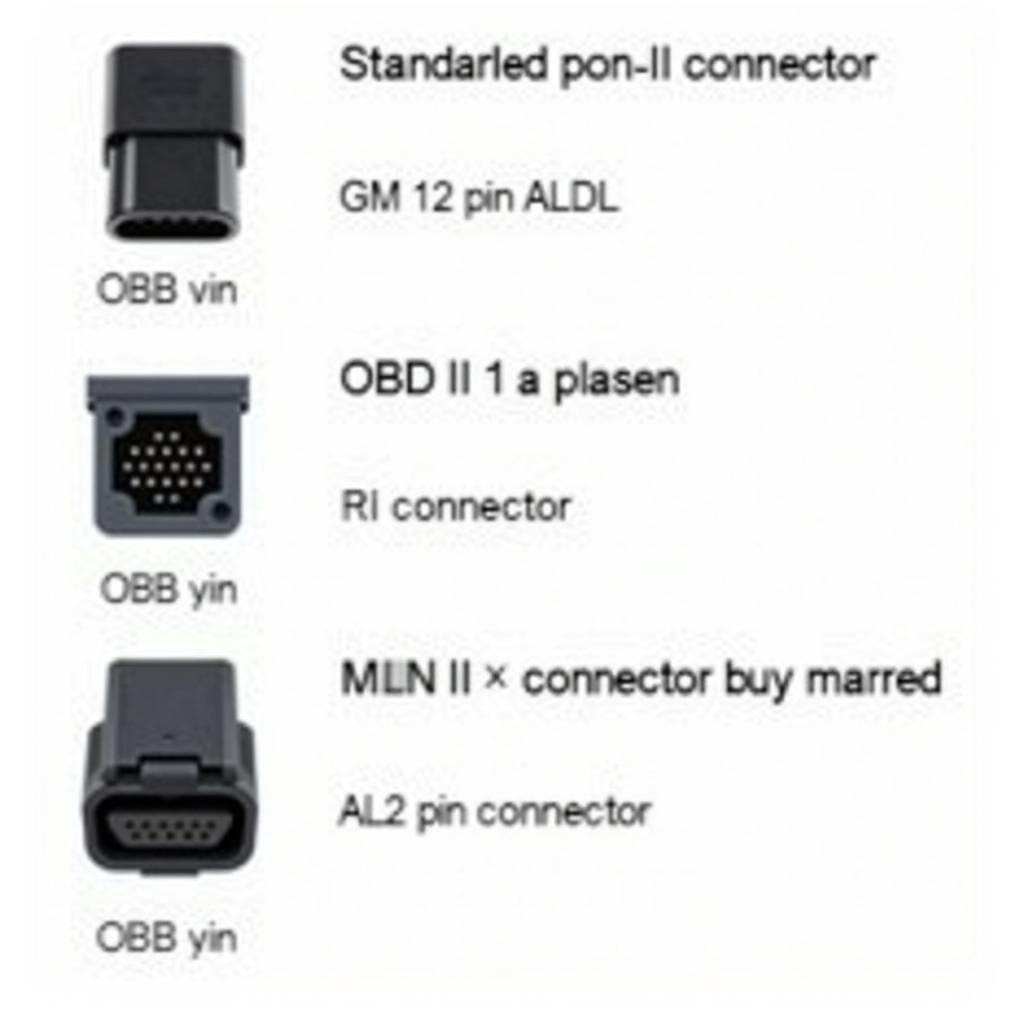Finding the diagnostic plug on older cars can sometimes feel like searching for a hidden treasure. Knowing where to plug in your car diagnostic tool is crucial for troubleshooting and maintaining your vehicle. This article will guide you through the process of locating the diagnostic port on various older car models, covering common locations, variations between manufacturers, and tips for identifying the correct connector.
Understanding OBD and Pre-OBD Systems
Before we delve into specific locations, it’s important to understand the different diagnostic systems used in older cars. Most cars manufactured after 1996 in the United States are equipped with On-Board Diagnostics II (OBD-II), which uses a standardized 16-pin connector. However, vehicles made before this date often used a variety of different connectors and protocols. These pre-OBD systems can vary significantly between manufacturers and even between models of the same make.
Common Diagnostic Plug Locations on Older Cars
While pre-OBD connectors lack standardization, there are some common places to look. These include under the dashboard, near the steering column, in the engine compartment, and under the hood near the firewall. Often, the connector will be covered by a protective cap or tucked away behind a panel.
For example, many General Motors vehicles from the 1980s and early 1990s use a 12-pin Assembly Line Diagnostic Link (ALDL) connector, typically located under the dashboard on the driver’s side. Ford vehicles from this era might have a variety of connectors, depending on the specific model and system being diagnosed. These might be found under the hood or under the dash.
Manufacturer-Specific Diagnostic Plug Locations
Identifying the correct diagnostic plug location for your specific older car often requires consulting the vehicle’s service manual. This manual will provide detailed diagrams and instructions on locating the diagnostic port for various systems.
“Knowing the year, make, and model of the vehicle is paramount when searching for the diagnostic plug,” says automotive expert John Smith, ASE Certified Master Technician. “This information allows you to narrow down the possible connector types and locations.”
Tips for Identifying the Correct Connector
Once you’ve located a potential diagnostic connector, it’s essential to verify that it’s the correct one. Comparing the connector to images in the service manual or online resources can help confirm its type. Also, be aware that some older cars may have multiple diagnostic connectors for different systems, such as engine management, transmission control, and anti-lock brakes.
“Don’t be afraid to get your hands dirty and explore,” adds Smith. “Often, the diagnostic plug is hidden away, but a little persistence can go a long way.”
Conclusion
Locating the diagnostic plug on older cars can be a challenge due to the lack of standardization in pre-OBD systems. However, by understanding the common locations, consulting the vehicle’s service manual, and using online resources, you can successfully find the correct connector and utilize your diagnostic tool. Knowing where to plug in your car diagnostic tool is the first step to effectively troubleshooting and maintaining your older vehicle.
FAQs
-
Where is the OBD port on older cars? The location varies depending on the make and model but common areas include under the dash, near the steering column, and in the engine compartment. where to plug in car diagnostic tool
-
How do I identify my OBD port? Consult your vehicle’s service manual or online resources for diagrams and specifications of your car’s diagnostic connector.
-
What if my car doesn’t have an OBD-II port? Pre-1996 cars often use manufacturer-specific connectors. You’ll need to identify the correct connector type for your car.
-
Why can’t I find my car’s diagnostic port? It might be hidden behind a panel or covered by a protective cap. Consult your service manual.
-
What tools do I need to access the diagnostic port? You may need a flashlight and possibly some basic tools to remove panels. where to plug in car diagnostic tool
Common Scenarios
Scenario 1: Check engine light illuminates on a 1994 Ford Mustang. The owner needs to locate the diagnostic port to read the trouble codes.
Scenario 2: A mechanic is troubleshooting a no-start condition on a 1988 Chevrolet pickup truck. They need to connect a diagnostic tool to check the engine management system.
Further Questions and Resources
- How to use a diagnostic tool on an older car?
- Understanding different types of pre-OBD diagnostic connectors.
- Where to find a service manual for your older car.
Need help? Contact us via WhatsApp: +1(641)206-8880, or email [email protected]. Our customer support team is available 24/7.



